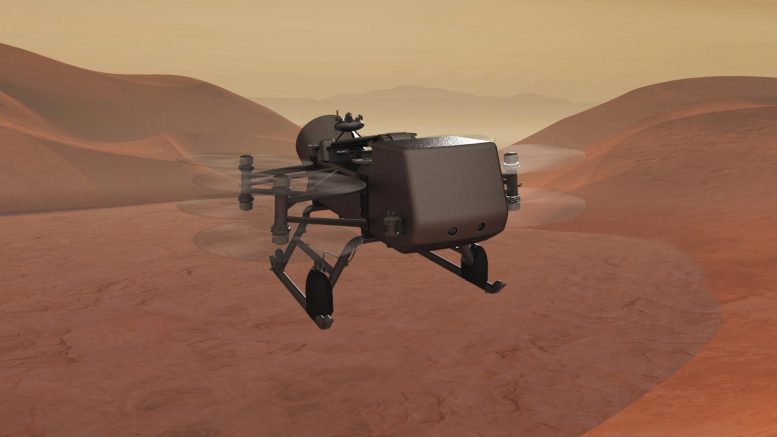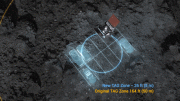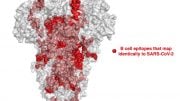
Dragonfly is a rotorcraft lander mission – part of NASA’s New Frontiers Program – designed to take advantage of Titan’s environment to sample materials and determine surface composition in different geologic settings. This revolutionary mission concept includes the capability to explore diverse locations to characterize the habitability of Titan’s environment, to investigate how far prebiotic chemistry has progressed, and even to search for chemical signatures that could indicate water-based and/or hydrocarbon-based life. Credit: Johns Hopkins APL
NASA’s Dragonfly mission to Titan advances to final design phase in 2024, with a re-planned launch date in 2028. The mission aims to explore Titan using a rotorcraft-lander and involves collaborations with multiple agencies.
NASA’s Dragonfly mission has been authorized to proceed with work on final mission design and fabrication – known as Phase C – during fiscal year (FY) 2024. The agency is postponing formal confirmation of the mission (including its total cost and schedule) until mid-2024, following the release of the FY 2025 President’s Budget Request.
Earlier this year, Dragonfly – a mission to send a rotorcraft to explore Saturn’s moon Titan – passed all the success criteria of its Preliminary Design Review. The Dragonfly team conducted a re-plan of the mission based on expected funding available in FY 2024 and estimate a revised launch readiness date of July 2028. The Agency will officially assess the mission’s launch readiness date in mid-2024 at the Agency Program Management Council.
“The Dragonfly team has successfully overcome a number of technical and programmatic challenges in this daring endeavor to gather new science on Titan,” said Nicola Fox, associate administrator of NASA’s Science Mission Directorate at NASA headquarters in Washington. “I am proud of this team and their ability to keep all aspects of the mission moving toward confirmation.”
Dragonfly takes a novel approach to planetary exploration, for the first time employing a rotorcraft-lander to travel between and sample diverse sites on Titan. Dragonfly’s goal is to characterize the habitability of the moon’s environment, investigate the progression of prebiotic chemistry in an environment where carbon-rich material and liquid water may have mixed for an extended period, and even search for chemical indications of whether water-based or hydrocarbon-based life once existed on Titan.
About Dragonfly
Dragonfly is being designed and built under the direction of the Johns Hopkins Applied Physics Laboratory in Laurel, Maryland, which manages the mission for NASA. The team includes key partners at NASA’s Goddard Space Flight Center in Greenbelt, Maryland; Lockheed Martin Space in Littleton, Colorado; Sikorsky, a Lockheed Martin company; NASA’s Ames Research Center in Silicon Valley, California; NASA’s Langley Research Center in Hampton, Virginia; Penn State University in State College, Pennsylvania; Malin Space Science Systems in San Diego, California; Honeybee Robotics in Pasadena, California; NASA’s Jet Propulsion Laboratory in Southern California; CNES (Centre National d’Etudes Spatiales), the French space agency, in Paris, France; DLR (German Aerospace Center) in Cologne, Germany; and JAXA (Japan Aerospace Exploration Agency) in Tokyo, Japan. Dragonfly is the fourth mission in NASA’s New Frontiers Program, managed by NASA’s Marshall Space Flight Center in Huntsville, Alabama, for the Science Mission Directorate.









Be the first to comment on "Titan Awaits: NASA’s Dragonfly Gears Up for Groundbreaking Exploration of Saturn’s Moon"